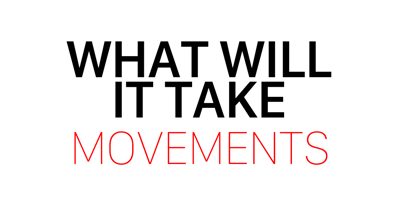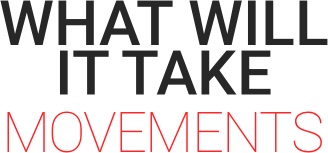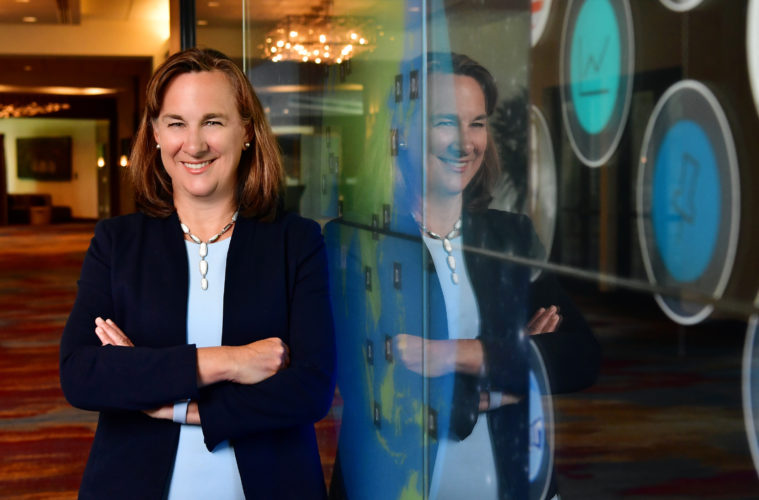BY MARIANNE SCHNALL
Women seeking to advance in leadership positions in today’s world face a complex and interconnected series of pressures, inequities and obstacles in both their careers and their lives. Women comprise less than a quarter of middle level managers, and that number shrinks even further at each rung of the corporate ladder. Part of the reason for the persistent and glaring inequality of women in high-level leadership positions is compounded not only by the systemic and structural problems they face—which are further exacerbated for women of color—but also by the lack of honest conversation or meaningful resources to help women understand and navigate these challenges and know they are not alone in facing them.
A new bestselling book by three of today’s top women leaders in business and academia seeks to take that head on: Arrive and Thrive: 7 Impactful Practices for Women Navigating Leadership by Susan MacKenty Brady, CEO of Simmons University Institute for Inclusive Leadership, Janet Foutty, Executive Chair of the Board of Deloitte US, and Dr. Lynn Perry Wooten, President of Simmons University.
Featuring personal stories and advice from 24 of the world’s most successful leaders, Arrive and Thrive uncovers and unpacks how to overcome some of these obstacles by offering “7 Impactful Practices” that help leaders not just arrive at the top but also thrive once they get there.
I had the opportunity to speak to one of the co-authors Janet Foutty who—as executive chair of the board for Deloitte U.S., the largest professional services organization in the United States—offered some of her personal leadership advice and experiences. Foutty, who is a passionate advocate for diversity, equity and inclusion (DEI) in the workplace, also talked about the challenges women are facing today, the crucial role diversity and equity play in a successful organization, the importance of women being their full authentic selves as leaders and more. As she told me, “What we really want women to know is that you don’t have to do it alone and you’re not alone. We, collectively, are here to help you.”
Marianne Schnall: What inspired you and your co-authors to write this book, and what are you most hoping that readers will take away from it?
Janet Foutty: We wrote this book because we really believed that there are not enough women thriving today. We really wanted to start the conversations with women to be super clear about the challenges that they face and give them lots of good ideas, tips and confidence to thrive once they’ve arrived. There’s so much written and talked about arriving and how you get there, but we really felt there was a gap: once you’re there, what do you actually do about it? That was the impetus in what the book is all about.
Schnall: What is one thing you most hope to accomplish with the book?
Foutty: That women actually are more confident about their ability, both to get there and to be wildly successful once they’re there.
Schnall: You touched lightly on this, but why did you feel a book like this was necessary?
Foutty: It’s been about survival—that’s been the heart of the matter.. People talk a lot about how few Fortune 500 CEOs we have, but women are less than a quarter of middle managers. And we certainly know that to be it, you have to see it. Women have higher turnover at the most senior levels. So we really saw it as surviving is the floor and thriving is the ceiling. That is what we felt like—not just getting there, but getting there and being wildly successful.
The issues that executives are facing right now are second to none. The level of complexity and difficulty and the number of topics coming out, from supply chain to talent to activism, there’s no way that one executive can tackle all these topics. So this is to help women—and by the way, men also—be much, much stronger leaders and allow them to thrive.
Arrive and Thrive: 7 Impactful Practices for Women Navigating Leadership
Schnall: In the book, you have so many different practices that you don’t usually see in some of these books, but I feel like they’re so important to be covered. For example, you have the chapter on inspiring a bold vision. Can you talk about why that practice is important?
Foutty: That’s probably my favorite chapter. It’s well established that—whether it is in government, academia, the corporate environment—the ability to paint a bold vision and get people excited to follow is a critical skill and attribute. And probably the reason I’m so passionate about this chapter is because I’ve lived this so directly. I always had this idea in my head that to be the one to paint the bold vision, you had to wake up in the morning with a brilliant new idea, this sort of “eureka” moment, and that was how you created a vision. And that was always very sort of intimidating and overwhelming to me as a leader. And I think, by the way, a lot of men grapple with this too, but I think women have more doubt around that than men.
So this idea that inspiring bold vision was actually about listening really carefully, connecting the dots, articulating it well, which is of course an incredibly important leadership skill set, and then getting people excited to go with you. Breaking that idea of inspiring a bold vision down into its component parts and launching from there—the ability to tell that story is what I felt really passionately about.
And I’ll just give you a quick example. I grew up as a Wall Street back office person. I was not a customer person. I was not a digital person. I was Wall Street back office; that was my pedigree. When I was running our technology business, a couple of my team members started talking to me about digital technology, about our phones and how they could change how business gets done. And I listened really carefully. It was not intuitive to me because it was not the sort of thing I had grown up doing or that I understood, but I listened really carefully. At one point they suggested, “We think you should go talk to this company and we should think about acquiring them.” So I jumped on a plane to Seattle and spent a full day with the team that was very nascent in thinking about how digital technology could change government and business. And you know, this was the furthest thing from an idea that I ever would’ve had. I could have read all day long, but listening to my team members, being willing to jump on a plane, take a big leap of faith to spend a day with this team, I got it. It was magical to me. Did I get it the way they did? No. But I understood enough of it to start to put the pieces together.
That is what Deloitte Digital is today, which is such an incredibly flagship part of who we are and how we lead in the market. So that was probably my most stark example—something so far from an idea that I ever would’ve come up with, to buy a company that then led to the tremendous success that Deloitte Digital is today. And I do think vision is of course about ideas, but it’s about listening. It’s about connecting the dots. It’s about painting the picture. It’s about leaps of faith. Those things for me were super important to communicate.
Schnall: Your book talks about encouraging women to embrace our authenticity and bring our whole selves to work, which seems so counter to the messages we usually hear that we sort of need to act in a certain way or hide certain parts of ourselves in our lives. Can you explain why you think we should do this and what it looks like?
Foutty: I think authenticity is really two different things that are very related. One is, it’s about embracing what makes you unique, and there has been quite a bit written and talked about that right now. But it’s also about expressing the principles you believe in and creating the space for others to do the same. We need amazing diverse talent in our workforce and more of it. Creating the space for people to bring what they think is unique about them to bear and the principles that they believe in, I believe makes much stronger teams and can create much better outcomes and answers for whatever topic it is that you’re trying to solve.
For me personally, and each of our authors has a different story to that end, I did not fit the mold for traditional business. I grew up the daughter of a scientist and an artist. I didn’t really understand what business was. I certainly didn’t understand the expectations and the norms for what a strong sort of pedigree of a business leader looked like. So I feel like before I knew what authenticity was, even as a topic, I didn’t really know how else to behave, but to sort of behave and carry myself as I’ve been raised, which is clarity in what you think about, your thoughtfulness about engaging others, all the things that are sort of fundamental to the way that I lead.
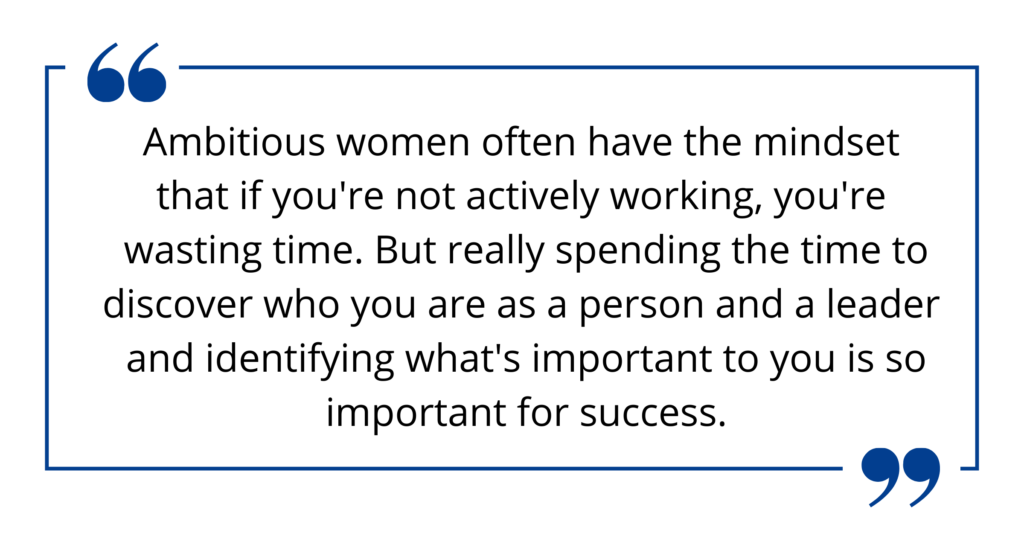 But as I got further into my business career, you obviously read all the signals and the clues and the perspectives, and you start thinking, “Oh, I need to act and behave as everyone else does.” So one of the reasons that I really pushed on the authenticity conversation is I think it is so important for women in particular—it’s actually really important for everybody—to be clear about what makes them unique because, frankly, that creates space for others to do so. I don’t want women to be intimidated by or feel like they have to hide who they are.
But as I got further into my business career, you obviously read all the signals and the clues and the perspectives, and you start thinking, “Oh, I need to act and behave as everyone else does.” So one of the reasons that I really pushed on the authenticity conversation is I think it is so important for women in particular—it’s actually really important for everybody—to be clear about what makes them unique because, frankly, that creates space for others to do so. I don’t want women to be intimidated by or feel like they have to hide who they are.
We don’t talk too much about race in the book, but as a white woman, I feel I’ve learned a lot over the last couple of years around how much more complex that is for women of color. So that’s something that I’ve also been very tuned in into, and I try to think about it through this lens of authenticity.
To make it really personal, I was a young mom, I had toddler twins, and I was a senior manager on deck to become a partner in the firm. And it was the one point in my career where I was actually working locally, so I had my team over to the house a lot—we did events, I had dinners, we did barbecues on the weekends. And you can’t really be inauthentic when you’re at home and when you have toddlers running around. You can’t hide that. Whether your kids are pulling on your skirt and having a tantrum or being charming and wonderful. That just is what it is. By the way, that client project was highly successful; the number of partners it created is very high. It might be the most that we’ve had out of one project in our firm, and I’m proud of that. But I’m most proud of how many Deloitte partners have become moms that were with me on that project, because this was the life and I was making it work and they were seeing it, living it and breathing it with me. And I think that gave them confidence to try it, even if they were trying it in a very different way than I did.
Schnall: I love that story. And it’s been interesting because I do think because of the pandemic and Zooms meetings and everything, we’re starting to see everyone’s home, everyone’s kids, an occasional dog—it’s been sort of interesting.
Foutty: Yes, it’s this idea that it’s hard to be inauthentic when you’re in your home. The idea that bringing that into the work environment creates so much goodness.
Schnall: Speaking of embracing our authenticity, we often hear about the need to earn impressive credentials and degrees to get ahead, but your book also encourages women to cultivate and foster our personal attributes like courage and resilience, rather just to focus on our actions that we take to accomplish our goals. Why is this type of internal work important? I feel it is connected to authenticity because to be authentic, it does require somewhat of a knowledge of our inner landscape and not being so focused on all these outer credentials.
Foutty: I’ll start by saying that one of the reasons I loved doing this book with my co-authors is because I’m not sure I would have thought about “investing in your best self” the same way had it not been for my co-author. Susan MacKenty Brady really pushed my thinking on this topic a lot. I absolutely live many of the values it represents, but I’m not sure I would’ve framed it as articulately as she did, which is how important it is.
Time spent reflecting is not time wasted. Ambitious women often have the mindset that if you’re not actively working, you’re wasting time. But really spending the time to discover who you are as a person and a leader and identifying what’s important to you is so important for success. Time for self-reflection is also important to give you the confidence for authenticity and courage, which are probably the two most necessary attributes to have to be really grounded in knowing yourself and being confident in yourself.
Schnall: Yes, because all the other things you talked about follow being authentic, even inspiring your bold vision.
Foutty: You can’t be authentic if you aren’t your “best-self” so it is really the centerpiece, which is ironic. It shows that I’m still on the journey of continuous learning, because as I said, if I had written this book, it would’ve been peppered throughout and I’m not sure I would’ve pulled it to the forefront at the level that Susan really pushed my thinking to do so.
Schnall: And isn’t that what it’s all about? We’re all just learning as we go. It’s an ongoing effort.
Foutty: That onto itself is an important message—that no matter how accomplished any of us look on paper, we’re all still continuing to invest and learn and grow.
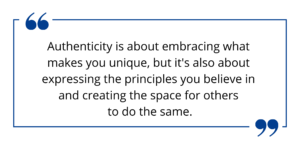
Schnall: How would you describe your personal leadership style?
Foutty: The first thing I would say about myself as a leader, and I think my teams would say this as well, and I say this often, is that our only job as leaders is to make those around us successful. And so when you think about inclusive leadership, that is really what it’s about. I am here today and I have had the privilege to have written this book and be here with you in this conversation and sit in the job that I’m in, because that was my mindset. It was not about my success; it was about the success of all those around me—my teams, my clients, my organizations. So that is number one on my list.
Number two is, assume and expect positive intent. This is something that I didn’t articulate early in my career, but really came to me later in my career. We talk in the book about building healthy teams, this idea that every interaction you go into—unless it is with your fiercest competitor, which is in the state of co-opetition, and even sometimes then—you go in with a mindset of assuming that the person or the team that you are interfacing with has a positive intent. When you assume that and expect that, it leads to such better outcomes.
And the last thing is, how you do anything is how you do everything. That is at the center of authenticity because it’s about consistency. The way I show up for this conversation today, the way I show up with a very senior executive, the way I show up with my team, the way I show up with my family, the way I interface with the administrative team in our organization—authenticity is about carrying yourself and your values consistently. And it is so easy to sniff that out in people that don’t do it well, and I think it undermines their leadership in a really, really meaningful way, frankly, now more than ever.
Schnall: You were talking about creating inclusive environments, and there is a chapter in the book on committing to the work of the inclusive leader. Many companies now do have diversity, equity and inclusion programs, and you’re a very passionate advocate of DEI at Deloitte. What advice would you have on truly making those programs impactful toward meaningful and lasting change in creating a culture of equity and inclusion?
Foutty: For me personally, and for our organization, we started focusing on diversity 20 plus years ago. We then shifted the conversation, in some ways, I think too far, to inclusion without having all the work of diversity done. Equity, have come to learn, is actually what sits at the heart of the matter. So what we’ve really been working on is looking at root causes of inequities. For instance, for me, in my role as a board chair, we have conversations in the board and with management about, what are the cultural orthodoxies that we carry as an organization? And what do we need to do to challenge and change those orthodoxies? That is one way to create the space for equity, which then can create the space for diversity and, frankly, the real ambition of an inclusive environment where everyone truly has an equitable opportunity for success and to feel part of the work of the team, the organization, the community, the society.
The last thing I would say is that I don’t believe equity is something that you can give to any one person or team to just say, “It’s your job to make this happen.” I believe in sponsorship from the top of the organization and as the chair of the firm, along with our CEO, I own that. I don’t believe the chief DEI officer or team or talent team owns it. The business leaders have to own it in full stop with support from the top of the organization and you have to create a culture through every sort of pore and fiber of the organization to really make a difference. It is a topic that warrants a lot of conversation, and I do believe the best leaders actually understand that.
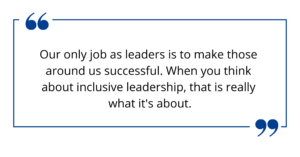
Schnall: Thank you for your leadership on that. I’ve learned through all my work on these issues that, in addition to external obstacles, women often have their own internal glass ceiling—being plagued by self-doubt and low self-esteem, and they may not know how to advocate for themselves, negotiate for themselves, ask for a raise or even speak up with their ideas. So I just wanted to get your perspective on that and what we can do about it, because I think it’s a really big factor.
Foutty: Actually you’ve hit on why we wrote this book, and you actually articulated it better in your question than I did in my opening, because this book is about giving women confidence and courage. I deeply believe that the best leaders have the courage to have the tough conversations, to ask for what they need, to be fearless in pushing their teams and organizations forward. But the whole idea of this book was to actually give women tried-and-true, tested ideas for actually how to build the confidence to go have the courageous conversations. That is exactly what we’re trying to do. I hope that our book serves as a confidence builder for women to know how fabulous they are, and for them to have ideas, tips, techniques, tools and methods to help them build that confidence and that courage.
I really encourage the women in our organization, both in the U.S. and around the world, to think about who your personal “board of directors” are. If you are feeling self-doubt about anything from raising your hand in a meeting to asking for a raise to talking about a career change, who are the five people you’ll go talk to that you know will not only give you great advice but also bolster you up? And I think that “board” should include women and men if at all possible, but if it’s just women, that’s great too. I think often we have such a go-it-alone mindset. But this idea that you have a cohort of people who, when you feel that internal glass ceiling, help you push yourself is a best practice that I personally use, and I’ve found to be invaluable.
What we really want women to know is that you don’t have to do it alone and you’re not alone. And those are two very different things. The first is that you’re not alone because we, collectively, are here to help you. And then the second part is that you don’t have to do it alone, and that means building an amazing group of people around you to help you solve whatever it is that you’re in front of. I do think that is an incredibly important part of the conversation.
Schnall: Sometimes I feel like people actually think we’re farther along than we are in terms of equity in leadership positions, but progress has been ridiculously slow, and then there’s still so much inequity. Why do you think progress has been so slow, and what do you think it will take to hasten it?
Foutty: I believe that us not understanding equity actually sits at the heart of the matter. And we’ve talked a lot about that as it relates to race, but I believe it applies to gender as well. We spent so many years talking about diversity without talking about equity and the truly systemic barriers that persist for women—economic mobility, professional advancement, health and well-being—they’re so disproportionately skewed for women and even more so for those of racially and otherwise diverse backgrounds. We wrote this book against the backdrop of the pandemic, and I think the pandemic has actually exacerbated this problem even more. The care phenomenon of women’s role as caretakers for household tasks, childcare and elder care, I think is putting that much more pressure.
I really do believe that for organizations—and whether that’s government, academia, business, not for profit—if you are not driving equity to the top of the conversation and having the courage to really push collective thinking on equity around women, then our progress will be as slow and unsteady as it has been. I am an optimist by nature, and I do believe that once we identify the root of the problem that we actually can solve it. I deeply believe that an equity mindset is the lens with which to change this conversation, and I’m really excited and hope that I, and we, have a little part in pushing that conversation forward.
For more information on Arrive and Thrive: 7 Impactful Practices for Women Navigating Leadership, click here.
Portions of this interview originally appeared at ForbesWomen.
About Janet Foutty
Janet Foutty is executive chair of the board for Deloitte US, the largest professional services organization in the United States. She previously was the chair and CEO of Deloitte Consulting LLP. Janet is a frequent author and public speaker with executive level audiences about the changing business landscape, leadership, corporate governance, crisis resiliency, equity, and technology disruption. Her thought leadership has appeared in business publications, including Fortune, Forbes, Harvard Business Review, the Wall Street Journal. Janet is a passionate advocate for diversity, equity, and inclusion (DEI) in the workplace; women in technology; and the need for science, technology, engineering, and mathematics (STEM) education. She has founded Women in Technology groups in India and the United States.
Marianne Schnall is a widely-published interviewer and journalist and author of What Will It Take to Make a Woman President?, Leading the Way, and Dare to Be You. She is also the founder of Feminist.com and What Will It Take Movements and the host of the podcast ShiftMakers.
